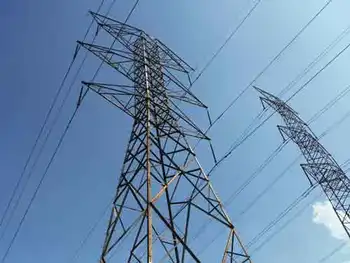South Carolina Quashes Plan to Run Power Lines through Historic, Natural Areas
Columbia, S.C. -- - For only the second time in 30 years, the S.C. Public Service Commission has killed a power company's plan to run towering, high-voltage electrical lines through a scenic community, agency officials say.
Instead, Progress Energy must use an alternate route for a transmission line to avoid a historic farm and natural area on U.S. 52 between Florence and Darlington, the PSC has recently ruled.
The PSC's decision is significant because it could bolster arguments by other landowners against new transmission lines in their communities.
Few people have challenged route decisions in the past. But that is expected to change as the demand for power increases and new lines are sought.
Utilities say they need new transmission wires to match the state's growth. A recent study for the Public Service Commission found that South Carolina has the lowest high-voltage transmission capacity in the country.
But critics question the locations of and, in some cases, the need for new transmission lines. They say large power lines electrocute birds, ruin the state's rural scenery and lower property values.
New transmission towers that hold power lines are often more than 100 feet tall. Power companies must clear huge swaths of trees for the lines and keep them free of limbs. Transmission lines carry electricity from power plants to substations, which then disperse lower voltages through local distribution lines.
Progress Energy spokesman Mike Hughes said the decision should not significantly delay installing the power line on the alternate route by mid-2005. That's necessary to prevent possible power outages from overloaded lines, the company says.
"We need to move forward," he said. "This is a crucial project for us."
Hughes, however, said his company expects to deal with more transmission-line siting issues in coming years. He also said some landowners along the proposed route near Florence and Darlington aren't happy with the recent PSC decision.
Robert James, who fought the power line through his family's farm on U.S. 52, said other S.C. residents can learn from his family's experience with the PSC.
The agency regulates the placement of most electrical transmission lines that exceed 125 kilovolts. That doesn't include every proposed transmission line, only the largest.
"This certainly should be a flag to people that there is hope, that if you're willing to do the work in a case like this, you may win," James said.
One upcoming proposal is a second high-voltage power line through the Pee Dee region from Florence into Marion County.
In the James case, commissioners cited environmental and economic concerns for shifting the last four to six miles of the 35-mile route away from the farm on U.S. 52. The alternate route would stay clear of a 105-year-old farmhouse, protect scenery and be $1 million cheaper than the route Progress Energy preferred, the order said.
The farmhouse is a possible candidate for the National Register of Historic Places. The farm is composed of woodlands and open fields of tobacco and other crops.
A transmission line through the property would have been "extremely intrusive upon the vista," James said. "Pylons across our farm would have dominated the landscape."
Gary Walsh, the commission's director, said the PSC decision is only the second of its kind that he remembers in his more than three decades at the agency. Typically, the public has chosen not to challenge high-voltage wires, commission lawyer David Butler said.
"When these things go through populated areas or environmentally sensitive areas, that's where you get your intervention," Butler said.
In 1987, the commission denied Duke Power Co.'s request to install a large transmission line along a route through the mountains of Oconee and Pickens counties. The PSC's order said the proposed power line would have cut a huge swath through virgin forests and past a 25-footwaterfall.
In the case decided last week, the PSC picked a different route than the one preferred by a power company, Walsh said. The PSC order said neither the route preferred by Progress or the route the PSC chose would have done great harm to the environment, but the alternate would have less effect. The alternate is about two miles south of the one Progress picked.
"Clearly, the alternate route avoids the Robert James house and farm, which we believe serves the public convenience, considering the apparent historical and environmental significance of the property," the order said.
Billy Want, the Charleston lawyer who represented James, said the PSC ruling is one of the few times the commission weighed environmental factors before making its decision.
But Walsh said he believes the lower cost of the alternate route -- about $1 million less -- had a greater influence on the commission's decision.
The line is projected to cost $19 million to $24 million and be in operation in the next three years.
Related News

N.S. joins Western Climate Initiative for tech support for emissions plan
HALIFAX - Nova Scotia is yet to set targets for its new cap and trade regime to reduce greenhouse gases, but the province announced Monday that it has joined the Western Climate Initiative Inc. -- a non-profit corporation formed to provide administrative and technical services to states and provinces with emissions trading programs.
Environment Minister Iain Rankin said joining the initiative would allow the province to use its IT system to manage and track its new cap and trade program.
Rankin said the province can join without trading greenhouse gas emission allowances with other jurisdictions -- California, Quebec, and Ontario are currently…




